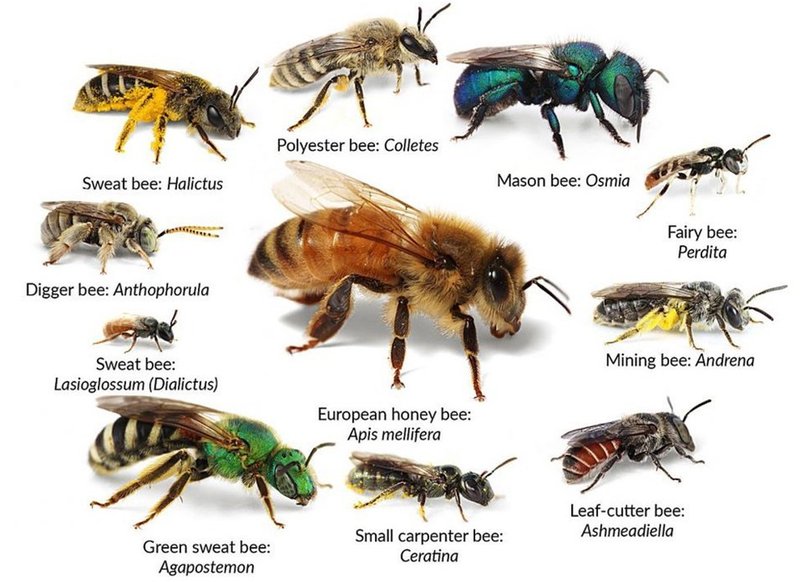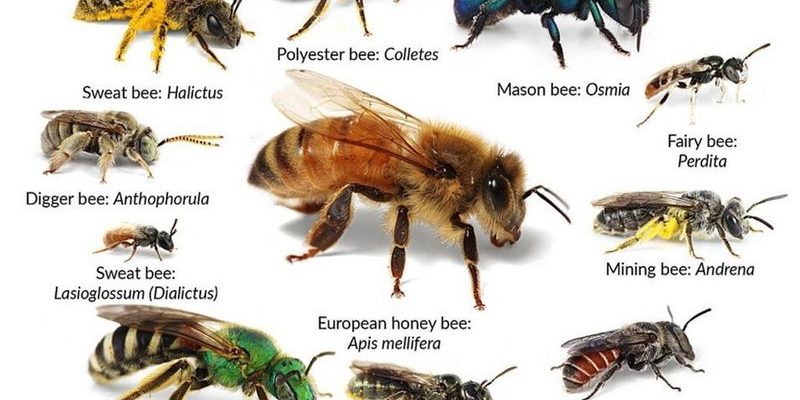
Let’s think of it this way: if insects were like characters in a story, bees would be the hardworking heroes, while wasps and hornets might take on the role of the misunderstood anti-heroes. While they all play significant roles in our ecosystem, their behaviors, appearances, and lifestyles can be very different. Whether you’re curious about these insects or just want to avoid a sting at your next picnic, this guide will help you navigate through the buzzing world of bees and similar insects.
Understanding Bees: The Pollinators
Bees are often celebrated as nature’s little pollinators. There are over 20,000 species of bees, and they play a critical role in our environment. When bees visit flowers, they collect nectar and pollen, which they use for food. In doing so, they help plants reproduce by transferring pollen from one flower to another. This process leads to the growth of fruits, seeds, and vegetables, making bees vital for our food supply.
You might be wondering how long bees have been around. They’ve been buzzing around for over 100 million years! Their social structure is quite fascinating too—most bees, like honeybees, live in colonies with a queen bee at the helm, worker bees doing the labor, and drones that focus on reproduction. These colonies work together harmoniously, showcasing incredible teamwork and communication.
Bees also have a unique way of communicating. They perform what’s known as the “waggle dance” to inform their nestmates about the location of food sources. This dance is like giving directions in a fun, little jig. So the next time you see a bee working hard, remember, it’s not just collecting nectar; it’s also a crucial part of nature’s dance.
Wasps: The Misunderstood Relatives
Now let’s talk about wasps. While they can look similar to bees, their behavior and roles in nature vary quite a bit. Wasps are generally more aggressive and are known for their painful sting. Unlike bees, which have barbed stingers and can sting only once, wasps have smooth stingers and can sting multiple times. This makes encounters with them a bit more nerve-wracking, especially when they feel threatened.
Unlike bees, wasps are not primarily focused on pollination. They are more like the gardeners of the insect world, as they help control pest populations by hunting and feeding on other insects. You could say they have a more predatory approach. Some wasps will even make nests out of chewed wood fibers, creating paper-like structures hanging from trees or eaves.
Despite their intimidating reputation, wasps do play essential roles in the ecosystem. They help in the decomposition process and can even assist in plant pollination, although not as effectively as bees. So while they might be less cuddly than bees, they definitely deserve some credit.
Hornets: The Bigger, Bolder Buzz
Hornets are essentially large wasps—think of them as the heavyweight champions of the wasp family. They’re known for their size and fierceness, which can be a little intimidating. The most well-known hornet is the European hornet, which can grow up to 1.5 inches long. That’s quite a bit larger than your average bee or wasp!
Hornets have a similar role in the ecosystem as other wasps, but they tend to be more aggressive, especially when defending their nests. Their nests are often quite large and intricately built, typically found in tree branches or even on the sides of buildings. Because of their size and the pain of their sting, it’s best to keep your distance if you spot a hornet’s nest.
While they share many characteristics with bees and wasps, hornets are also important for pest control. They can consume large quantities of other insects, helping to keep the environment balanced. It’s fascinating how, despite their fierce nature, hornets contribute positively to our ecosystem.
Bee vs. Wasp: Key Differences
At this point, you might be curious about how to tell bees and wasps apart. Here’s a quick rundown of some key differences between these insects:
- Body Structure: Bees generally have hairy bodies that help them collect pollen, while wasps have sleeker, smoother bodies.
- Diet: Bees primarily eat nectar and pollen, whereas wasps often prey on other insects.
- Stinging: Bees can only sting once and then die, while wasps can sting multiple times.
- Nesting Habits: Bees tend to build hives out of wax, while wasps create nests using chewed wood.
Being able to identify these differences can be helpful, especially if you’re trying to enjoy a sunny day outside. If a bee buzzes by, they’re likely just going about their business. But if a wasp or hornet gets too close, you might want to avoid provoking them!
Bees, Wasps, and Ecosystem Services
It’s easy to focus on the differences, but all three insects—bees, wasps, and hornets—provide essential *ecosystem services*. Bees are our primary pollinators, ensuring plant growth, which supports our food supply. Wasps help control pest populations, reducing the need for chemical pesticides. Hornets, despite their fierce reputation, also contribute to pest control and aid in decomposition.
Understanding how these insects work together shows the delicate balance of our ecosystem. When one group thrives, it can positively affect others. For instance, by keeping pest populations in check, wasps and hornets create a healthier environment for bees to pollinate.
So, the next time you spot one of these little critters, remember that they’re not just annoying pests. They’re critical players in our natural world!
Bees, wasps, and hornets each have distinct roles in our ecosystem, making them fascinating subjects for exploration. Whether you’re admiring the industriousness of bees, understanding the predatory nature of wasps, or respecting the aggressive protection of hornets, there’s a lot to learn.
The next time you see a bee buzzing around a flower, a wasp hovering near your picnic, or a hornet lurking in the trees, take a moment to appreciate the unique characteristics they bring to the table. We share this planet with these critical insects, and understanding them helps us coexist just a little bit better. So, don’t just swat away those buzzing insects—take a moment to learn about them. In the grand scheme of things, they’re all part of the same family, each contributing to the beauty and balance of nature.

